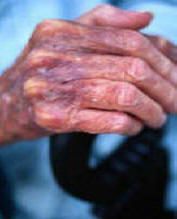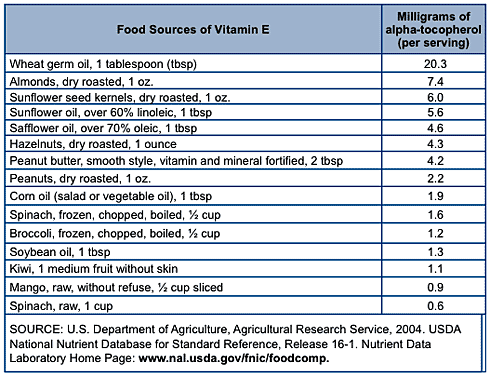E deficiency

Vitamin E
As we eat more processed foods the amount of vitamin E in our diet continues to plummet. On this page, we will show you risks of not getting enough vitamin E. The RDA (recommended daily allowance) for vitamin E is 15 mg of d-alpha-tocopherol for adult men and women (1 mg of d-alpha-tocopherol is equal to 1.5 IU, so the RDA is equal to 22.5 IU). Food and supplement labels usually list amounts of vitamin E in milligrams rather than international units. When diseases of the liver, gall bladder, or pancreas reduce intestinal absorption, a mild deficiency of vitamin E can result. A diet of processed foods that's very low in fat might also cause a deficiency.
An early sign of vitamin E deficiency
are lipofuscin or age spots.
Side Effects of Vitamin E Deficiency
No obvious symptoms accompany a vitamin E deficiency, making it hard to detect. A brownish pigmentation of the skin, called age spots or lipofuscin, may signal the problem, but only a blood test can confirm that vitamin E levels are too low.
Vitamin E deficiency can occur in newborn babies, especially those born prematurely, because the mother doesn't transfer much vitamin E to the developing fetus until the last few weeks of pregnancy.
The deficiency can cause hemolytic anemia, a condition in which the red blood cells are so fragile they rupture.
As we mentioned earlier, it has become increasingly difficult a sufficient amount of vitamin E in our diet. In our final section, we will look at the safety and utility of vitamin E supplements.
